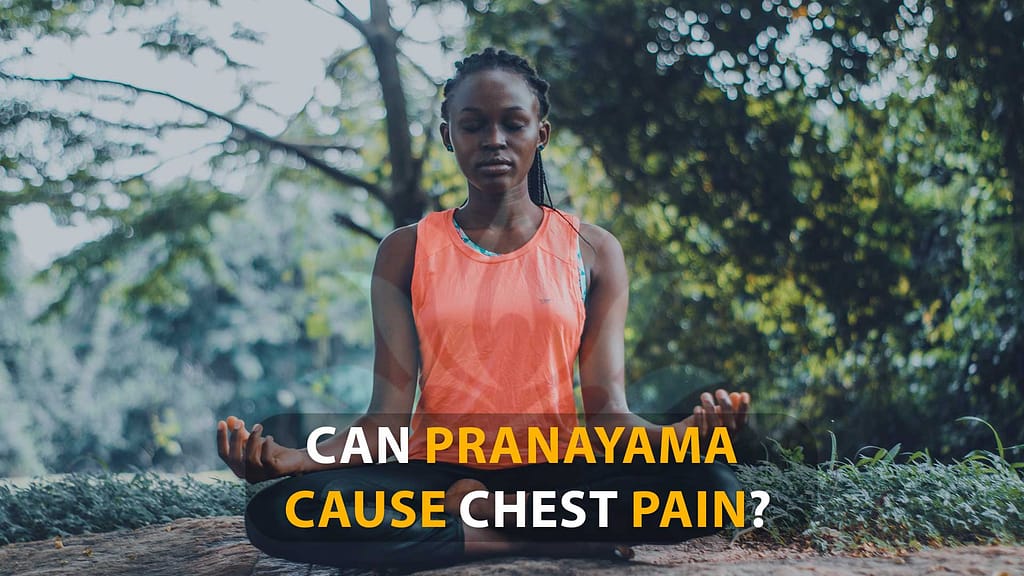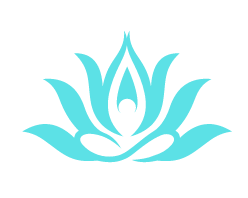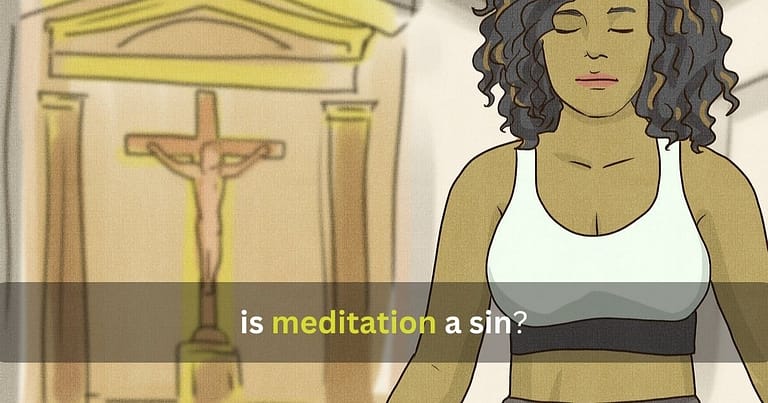Can Pranayama Cause Chest Pain? – 5 Causes Of Chest Pain Due To Pranayama In 2024

Can Pranayama Cause Chest Pain?
Yes, it can. Several potential causes of chest pain may occur during or after pranayama practice. One option is that they may exert too much effort or use incorrect techniques, which can hurt the chest muscles and put excessive stress on them.
Yoga breathing techniques known as pranayama are usually considered safe and advantageous for most individuals. Yet, pranayama can also result in discomfort or suffering, especially chest pain, just like any physical activity or exercise.
The breath is the vital link between the body and the mind, and pranayama is one of the most important yogic exercises.
Yoga practice requires the use of diaphragmatic breathing. It’s frequently regarded as the basis for all yoga breathing practices.
Yoga practitioners employ diaphragmatic breathing, also known as “pranayama,” to assist in relaxing the mind, lessen tension, and enhance their overall physical and mental well-being.
In a yoga session, there are usually various methods to incorporate diaphragmatic breathing into the routine.
Using it might help you stay present and focused while performing more difficult poses, during meditation or relaxation sessions, or at the start of the class.
Pranayama breathing techniques
There are four essential breathing techniques used in pranayama practices:
- Praka (respiration)
- Recaka (exhaling slowly)
- Anta kumbhaka (retention of breath inside)
- Bahi kumbhaka (shallow breath).
Read:
Why Do I Feel Electrical Sensations After Meditation? – Unveiling The Reason Behind In 2023
Causes of chest pain due to pranayama

1. Muscle cramping
Too much intense or extended pranayama practice may result in chest discomfort from overusing the chest muscles.
2. Overcomplicating it
Using force or aggression when practicing diaphragmatic breathing can occasionally cause symptoms of lightheadedness, dizziness, or breathlessness.
To prevent these negative effects, starting cautiously and gradually raising the breath intensity is vital.
3. The discomfort of deep breathing
While diaphragmatic breathing can aid in diaphragm muscle strengthening, misuse or improper technique can occasionally cause tension or pain in this region.
Modifying your technique or seeking advice from a certified yoga instructor if you feel pain or discomfort when doing diaphragmatic breathing is important.
4. Not appropriate for everyone
Although many individuals find diaphragmatic breathing beneficial, not everyone should use it.
It may be necessary to alter or avoid this procedure for those with specific medical issues, such as heart failure or chronic obstructive pulmonary disease (COPD).
Before beginning any new yoga or breathing exercises, speaking with a licensed healthcare professional is vital, especially if you have a current medical issue.
5. Bad posture
Poor posture can put tension on the chest muscles when doing pranayama and lead to chest discomfort.
6. Pre-existing illnesses
Those with pre-existing conditions, including asthma, chronic obstructive pulmonary disease (COPD), or cardiovascular disease, may experience chest discomfort when practicing pranayama.
7. Oxygen depravation
Although pranayama calls for deep, controlled breathing, too quick breathing can cause chest discomfort.
8. Practicing without guidance
Some people start practicing pranayama without expert guidance, which results in massive pain.
Read:
Why Do I Feel Cold After Meditation? – Secret Behind In 2023
How to prevent chest pain during pranayama?

Here are some suggestions you may use to avoid experiencing chest pain when doing pranayama:
1. Start slowly
It is essential, to begin with slow, gentle breathing methods before moving on to faster, more forceful ones. Your body will be able to adapt to the practice gradually.
2. Keeping proper posture
It is important when doing pranayama. With your back straight and shoulders relaxed, you should sit up straight. Your chest muscles will experience less pressure, and chest pain will be avoided.
3. Breathe properly
When practicing pranayama, proper breathing technique is essential. It would help if you concentrated on slow, deep breathing rather than hyperventilating or breathing too quickly. This will stop chest discomfort from excessive exercise or breathing too quickly.
4. Avoid overexerting yourself
By doing pranayama too quickly or for too long. Due to the chest muscles being overworked, this may result in chest pain.
5. Consult a physician
Consult your doctor before beginning pranayama if you have any pre-existing medical issues, such as asthma or cardiovascular disease. They may offer detailed instructions on how to practice safely.
Read:
Meditation And Cool Breeze (Vibrations) – Complete Guide In 2023
Conclusion
Pay attention to your body’s signals and stop practicing immediately if you feel chest pain or discomfort. With proper technique and safeguards, Pranayama may be a safe and valuable practice for your general health and well-being.
FAQs
Q: Why am I always suffering from chest tightness after doing Pranayama?
A: It could be that you are trying too hard. Pranayama is hard to learn, and if it’s not done right, it can cause problems.
Q: What are the side effects of pranayama breathing?
A: Problems with breathing, dizziness, weak stomach, crazy thinking, trouble sleeping, etc.
Q: What can’t you do with pranayama?
A: Pranayamas and breathing practices don’t have any limits as long as anyone follows the directions carefully and a trained yoga teacher or breathwork coach is there to help.
Q: What is the secret of pranayama?
A: Anuloma Viloma breathing should be done on an empty stomach, ideally after you’ve gone to the bathroom in the morning. It can also be done before dinner in the evening or 4 hours after the last meal.
Video Guide:
Read Also
- Should I Do Yoga Before Or After Walking? – What’s The Best Approach? 2023
- Can We Do Yoga Without Wearing A Bra? – Benefits And Disadvantages Of Wearing Bra In 2023
- Is Yoga Aerobic Or Anaerobic? – What Separates Aerobic Activity From Anaerobic Exercise?
- Is Yoga Pagan? – Truth Behind Yoga In 2023
- Why Do I Feel Sick After Yoga? – How To Prevent Sick After Yoga In 2023
- Is Yoga Meant To Worship Gods? – Why Yoga Is Misunderstood As Worship? In 2023






